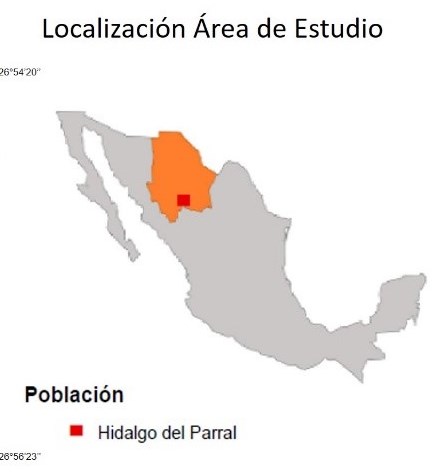Study of the Behavior of Plant Species in a Phytostabilization Process for Remediation of Soil Contaminated by Abandoned Mine Tailings
DOI:
https://doi.org/10.36790/epistemus.v16i32.197Keywords:
Phytoremediation, admenment, soil contaminationAbstract
The objective of the study was to evaluate the phytoremediation potential of eight native plants sown with the support of amendments, on the mine tailings from the La Prieta mine in Parral, Chihuahua, Mexico, to phytostabilize heavy metals and metalloid-As in their roots. The concentration of the elements, in the aerial part, root, and soil, was determined following the criterial established by the NOM-147-SEMARNAT/SSA1-2004 standard. The species S. macrostachya and S. aireoides showed the highest copper concentrations with values between 150 and 400 mg/kg, whereas in the rest of the species ranged between 50 and 380 mg/kg. The species S. aireoides, A. Canescens, S. Daysilirium, and S. Macrostachia presented phytostabilization potential by showing Translocation Factor values <0.5, for As, Cu, Pb, and Zn. The species were adapted to the in situ experiment, showing tolerance to heavy metals, metalloid, and potential for phytostabilization.
Downloads
References
Instituto Nacional de Ecología (INE), “Fuentes de contaminación en México,” 2007. http://www2.inecc.gob.mx/publicaciones2/libros/372/fuentes.html#top.
K. Islam, X. Vilaysouk, and S. Murakami, “Integrating remote sensing and life cycle assessment to quantify the environmental impacts of copper-silver-gold mining: A case study from Laos,” Resour. Conserv. Recycl., vol. 154, no. August 2019, p. 104630, 2020, doi: 10.1016/j.resconrec.2019.104630. DOI: https://doi.org/10.1016/j.resconrec.2019.104630
L. Rodríguez et al., “Jales mineros en Parral: identificación y cuantificación de elementos potencialmente tóxicos y elementos recuperables en los depósitos de la mina La Prieta.,” Cimav, 2012.
R. Moran, “Is This Number to Your Liking? Water Quality Predictions in Mining Impact Studies,” in Prediction: Science, Decision Making, and the Future of Nature, Island Pre., D. Sarewitz, R. Pielke Jr, and R. Byerly Jr, Eds. DC Washington, EUA: Press, 2000, pp. 185–198.
Semarnat, Guía Técnica para Orientar en la Elaboración de Estudios de Caracterización de Sitios Contaminados, Primera. Tlalpan, D.F. México, 2010.
D. O. de la Federación., “Ley General para la Prevención y el Manejo Integral de los Residuos,” pp. 1–52, 2015, [Online]. Available: https://www.gob.mx/cms/uploads/attachment/file/27266/Ley_General_de_Residuos.pdf.
J. Candia, “Manual de tecnologias de remediacion de sitios contaminados,” J. Chem. Inf. Model., vol. 53, no. 9, pp. 35–36, 2019.
Y. R. Ramos and C. D. Siebe, “Estrategia para identificar jales con potencial de riesgo ambiental en un distrito minero: Estudio de caso en el Distrito de Guanajuato, Mexico,” Rev. Mex. Ciencias Geol., vol. 23, no. 1, pp. 54–74, 2006.
X. Gong et al., “Remediation of contaminated soils by biotechnology with nanomaterials: bio-behavior, applications, and perspectives,” Crit. Rev. Biotechnol., vol. 38, no. 3, pp. 455–468, Apr. 2018, doi: 10.1080/07388551.2017.1368446. DOI: https://doi.org/10.1080/07388551.2017.1368446
M. O. Mendez and R. M. Maier, “Review Phytostabilization of Mine Tailings in Arid and Semiarid Environments — An Emerging Remediation Technology,” no. 3, pp. 278–283, 2008, doi: 10.1289/ehp.10608. DOI: https://doi.org/10.1289/ehp.10608
W. Llatance, J. Emiliani, D. Bergara, L. Salvatierra, and L. Pérez, “Caracterización de los mecanismos de fitorremediación de Salvinia sp. frente a la exposición a metales pesados y su impacto sobre la fisiología vegetal,” Energeia, vol. 16, no. 16, pp. 37–45, 2019, [Online]. Available: https://repositorio.uca.edu.ar/bitstream/123456789/9634/1/caracterizacion-mecanismos-fitorremediacion.pdf.
J. Gil-Loaiza et al., “Phytostabilization of mine tailings using compost-assisted direct planting: Translating greenhouse results to the field,” Sci. Total Environ., vol. 565, pp. 451–461, 2016, doi: 10.1016/j.scitotenv.2016.04.168. DOI: https://doi.org/10.1016/j.scitotenv.2016.04.168
J. Batista, S. Martínez, and M. Gabarrón, “EFECTO DE LA APLICACIO N DE ZEOLITA SOBRE LA FITOESTABILIZACIO N ASISTIDA EN UN DEPO SITO MINERO,” Univerdidad Politec. Cart., p. 56, 2019.
T. F. Afonso, C. F. Demarco, S. Pieniz, M. S. Quadro, F. A. O. Camargo, and R. Andreazza, “Bioprospection of indigenous flora grown in copper mining tailing area for phytoremediation of metals,” J. Environ. Manage., vol. 256, no. November 2019, 2020, doi: 10.1016/j.jenvman.2019.109953. DOI: https://doi.org/10.1016/j.jenvman.2019.109953
F. B. Salas Urviola, P. Guadarrama Guzmán, G. Fernández Villagómez, J. F. González Sánchez, and L. A. Barraza Torres, “Predicción De Drenaje Ácido De Mina, Jales De La Mina La Prieta, Chihuahua, México,” Rev. Int. Contam. Ambient., vol. 36, no. 4, pp. 825–834, 2020, doi: 10.20937/rica.53523. DOI: https://doi.org/10.20937/RICA.53523
F. Gonzalez et al., “PROYECTO FITORREMEDIACION DE JALES MINEROS ABANDONADOS DE ZONAS ARIDAS DE CHIHUAHUA: COMPARACION DE EXPERIMENTO DE INVERNADERO Y EXPERIMENTO DE CAMPO; UNA VISION GENERAL,” 2019.
B. Luján et al., “DISEÑO Y ESTABLECIMIENTO DE TÉCNICA DE FITOESTABILIZACIÓN DE SUELO CONTAMINADO POR JALES MINEROS, EXPERIMENTO EN INVERNADERO,” 2019.
A. Cano et al., “EMERGENCIA DE PASTOS NATIVOS EN UN SITIO CONTAMINADO CON JALES MINEROS ABANDONADOS CON ENMIENDAS DE SUSTRATO COMPUESTO,” 2019.
Comision Nacion del Agua, Reporte del Clima en México. México, 2020.
J. Ramírez and M. Calva, “PLAN DE MUESTREO HIDALGO DEL PARRAL , CHIHUAHUA,” 2019.
L. de T. I. LTI, “Espectroscopía de Plasma ICP-OES.” 2020, [Online]. Available: https://laboratoriotecnicasinstrumentales.es/analisis-qumicos/espectroscopa-de-plasma-icp-oes.
A. Pollard, R. Reeves, and A. Baker, “Facultative hyperaccumulation of heavy metals and metalloids.,” p. Plant Sci. 217–218, 8–17, doi: https://doi.org/10.1016/j. plantsci.2013.11.011. DOI: https://doi.org/10.1016/j.plantsci.2013.11.011
T. F. Afonso, C. F. Demarco, S. Pieniz, F. A. O. Camargo, M. S. Quadro, and R. Andreazza, “Potential of Solanum viarum Dunal in use for phytoremediation of heavy metals to mining areas, southern Brazil,” Environ. Sci. Pollut. Res., vol. 26, no. 23, pp. 24132–24142, 2019, doi: 10.1007/s11356-019-05460-z. DOI: https://doi.org/10.1007/s11356-019-05460-z
J. Gil-Loaiza et al., “Phytoremediation Reduces Dust Emissions from Metal(loid)-Contaminated Mine Tailings,” Environ. Sci. Technol., vol. 52, no. 10, pp. 5851–5858, 2018, doi: 10.1021/acs.est.7b05730. DOI: https://doi.org/10.1021/acs.est.7b05730

Downloads
Published
How to Cite
Issue
Section
License
Copyright (c) 2022 EPISTEMUS

This work is licensed under a Creative Commons Attribution-NonCommercial-ShareAlike 4.0 International License.
The magazine acquires the patrimonial rights of the articles only for diffusion without any purpose of profit, without diminishing the own rights of authorship.
The authors are the legitimate owners of the intellectual property rights of their respective articles, and in such quality, by sending their texts they express their desire to collaborate with the Epistemus Magazine, published biannually by the University of Sonora.
Therefore, freely, voluntarily and free of charge, once accepted the article for publication, they give their rights to the University of Sonora for the University of Sonora to edit, publish, distribute and make available through intranets, Internet or CD said work, without any limitation of form or time, as long as it is non-profit and with the express obligation to respect and mention the credit that corresponds to the authors in any use that is made of it.
It is understood that this authorization is not an assignment or transmission of any of your economic rights in favor of the said institution. The University of Sonora guarantees the right to reproduce the contribution by any means in which you are the author, subject to the credit being granted corresponding to the original publication of the contribution in Epistemus.
Unless otherwise indicated, all the contents of the electronic edition are distributed under a license for use and Creative Commons — Attribution-NonCommercial-ShareAlike 4.0 International — (CC BY-NC-SA 4.0) You can consult here the informative version and the legal text of the license. This circumstance must be expressly stated in this way when necessary.
The names and email addresses entered in this journal will be used exclusively for the purposes established in it and will not be provided to third parties or for their use for other purposes.




























